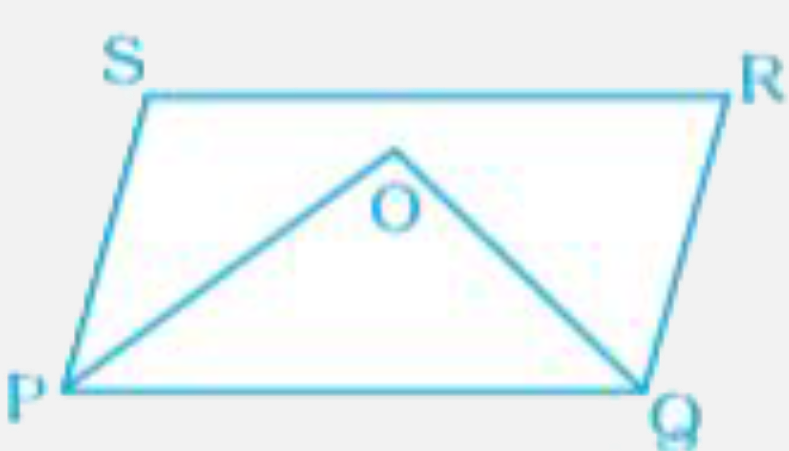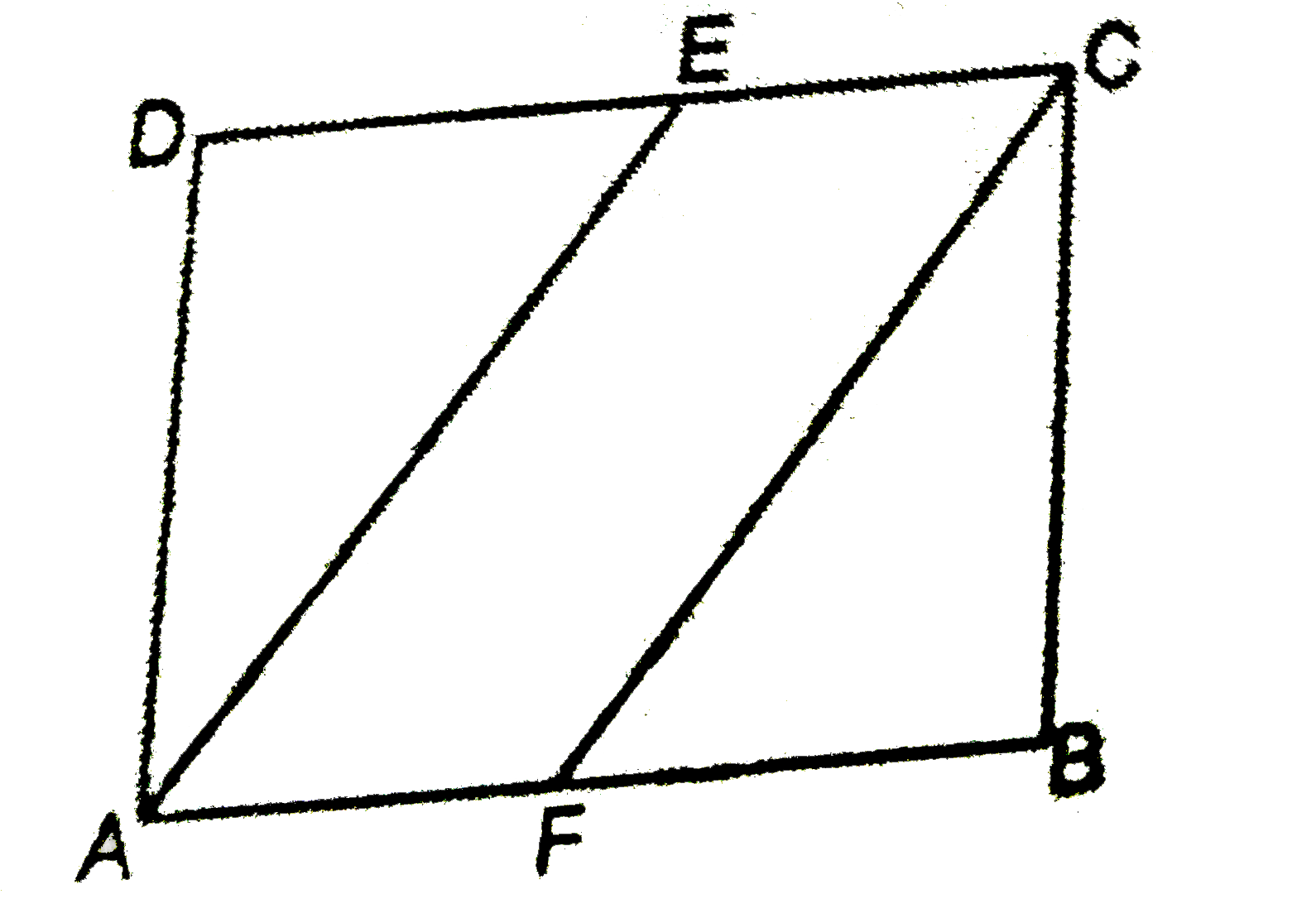ABCD is a parallelogram. Angle bisector of ∠A and angle bisector of ∠C cuts extended side DC and AB at Q and P respectively. If ∠A=50∘, find ∠P+∠Q.
The correct Answer is:50∘
To solve the problem, we will follow these steps:
1. Identify the Angles in the Parallelogram:
In parallelogram ABCD, we know that opposite angles are equal. Given that angle A = 50°, we can conclude that angle C = 50° as well. Since the sum of adjacent angles in a parallelogram is 180°, we can find angles B and D:
- Angle B = 180° - Angle A = 180° - 50° = 130°
- Angle D = 180° - Angle C = 180° - 50° = 130°
2. Determine the Angles Created by the Angle Bisectors:
The angle bisector of angle A divides it into two equal parts:
- Angle PAQ = Angle A / 2 = 50° / 2 = 25°.
Similarly, the angle bisector of angle C divides it into two equal parts:
- Angle DCP = Angle C / 2 = 50° / 2 = 25°.
3. Use the Properties of Parallel Lines:
Since AB is parallel to DC (as it is a property of parallelograms), the angles formed by the transversal (the angle bisectors) will be equal:
- Angle PAQ = Angle Q = 25° (because they are alternate interior angles).
- Angle DCP = Angle P = 25° (for the same reason).
4. Calculate the Sum of Angles P and Q:
Now we can find the sum of angles P and Q:
- Angle P + Angle Q = 25° + 25° = 50°.
Thus, the final answer is:
Angle P + Angle Q = 50°.
In parallelogram ABCD, we know that opposite angles are equal. Given that angle A = 50°, we can conclude that angle C = 50° as well. Since the sum of adjacent angles in a parallelogram is 180°, we can find angles B and D:
- Angle B = 180° - Angle A = 180° - 50° = 130°
- Angle D = 180° - Angle C = 180° - 50° = 130°
The angle bisector of angle A divides it into two equal parts:
- Angle PAQ = Angle A / 2 = 50° / 2 = 25°.
Similarly, the angle bisector of angle C divides it into two equal parts:
- Angle DCP = Angle C / 2 = 50° / 2 = 25°.
Since AB is parallel to DC (as it is a property of parallelograms), the angles formed by the transversal (the angle bisectors) will be equal:
- Angle PAQ = Angle Q = 25° (because they are alternate interior angles).
- Angle DCP = Angle P = 25° (for the same reason).
Now we can find the sum of angles P and Q:
- Angle P + Angle Q = 25° + 25° = 50°.
Angle P + Angle Q = 50°.
Topper's Solved these Questions
- QUADRILATERALBOOK - ADVANCED MATHS BY ABHINAY MATHS ENGLISHCHAPTER - QUADRILATERALEXERCISE - EXERCISE
48 Videos
- PROFIT & LOSSBOOK - ADVANCED MATHS BY ABHINAY MATHS ENGLISHCHAPTER - PROFIT & LOSSEXERCISE - Questions
200 Videos
- RATIO & PROPORTIONBOOK - ADVANCED MATHS BY ABHINAY MATHS ENGLISHCHAPTER - RATIO & PROPORTIONEXERCISE - QUESTIONS
113 Videos
Similar Questions
Knowledge Check
ABCDE is a regular pentagon. Angle bisector of ∠BAE meets CD at m. angle bisector of ∠BCD meets AM at P. Find the ∠CPM= ?
A30B35C36D60
In ΔABC angle bisector of ∠A,∠B∠C meets cuts circumcircle at x, y, z respectively. If ∠A=50∘,∠Czy=30∘ find ∠BYZ.
View SolutionIn a ΔABC, angle bisector of ∠A,∠B&∠C cuts circumcircle at P, Q , R respectively . If ∠CRQ=46∘&∠A=50∘, then find ∠BQR.
View SolutionABCD is a parallelogram. The bisector of angle A intersects CD at X and bisector of angle C intersects AB at Y. Is AXCY a parallelogram? Give reason.
View SolutionIn parallelogram ABCD, the angle bisector of ∠A bisects BC. Will angle bisector of B also bisect AD? Give reason.
View SolutionABCD is a parallelogram in which ∠A=78∘. Compute ∠B,∠Cand∠D.
View SolutionIn a parallelogram ABCD, the bisector of ∠A bisects the line Bcat point X. Prove that AD = 2AB.
View SolutionABCD is a parallelogram. If the bisectors of the angle A and angle C meet the diagonal BD at points P and Q respectively, then which one of the following is correct ?
View Solution


